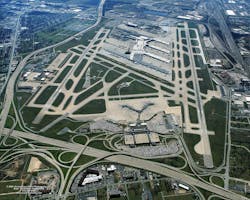Boston Marathon Bombings Add Renewed Focus To Airport Emergency Plans
All over the country, airport managers I’ve spoken with have been re-checking their emergency plans in light of recent mass shootings. Active shooter scenarios have been added to many emergency drills at large airports in various parts of the country.
But clearly the Boston Marathon bombings - with the specter of terrorism - have added an even greater sense of urgency in reviewing and testing these plans.
As I have urged in other postings, all operators on an airport – whether large, medium or small – need to have their own emergency plans and need to be familiar with their airport’s emergency plans.
Of course, it is not enough to have a plan, you need to update and test it at regular intervals. A plan gathering dust on a shelf does no one any good in a real emergency. And unfortunately those emergencies do occur. As one area is hardened against security intrusions, other areas that were previously thought to be unlikely targets now become more desirable, as their security is often easier to breach.
And I can’t emphasize enough the importance of each airport employee – especially those with AOA access- being the eyes and ears of security. They are the ones most familiar with the areas where they work, the ones who can spot people and objects that appear out of place. They’re our first line of defense at the airport. They need to be regularly reminded to speak up immediately if they see something that seems not quite right.
About the Author

John Goglia
John Goglia has 40+ years experience in the aviation industry. He was the first NTSB member to hold an FAA aircraft mechanic's certificate. He can be reached at [email protected].
John Goglia is an independent aviation safety consultant and Adjunct Professor at Vaughn College of Aeronautics and Technology and regular monthly columnist for four aviation trade publications. He was an airline mechanic for more than 30 years. He has co-authored two text books (Safety Management Systems in Aviation, Ashgate Publishing 2009 and Implementation of Safety Management Systems in Aviation, Ashgate Publishing 2011).
